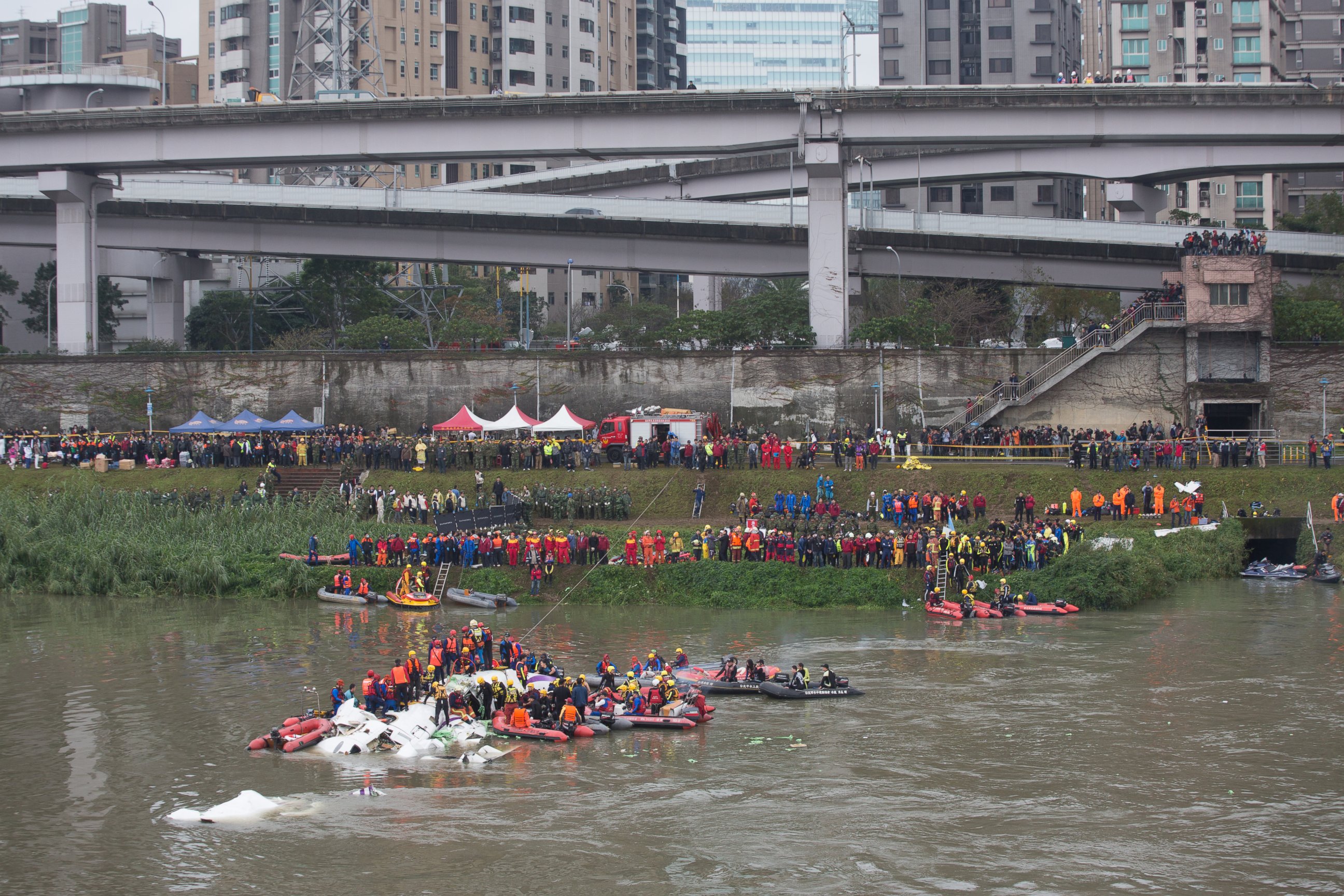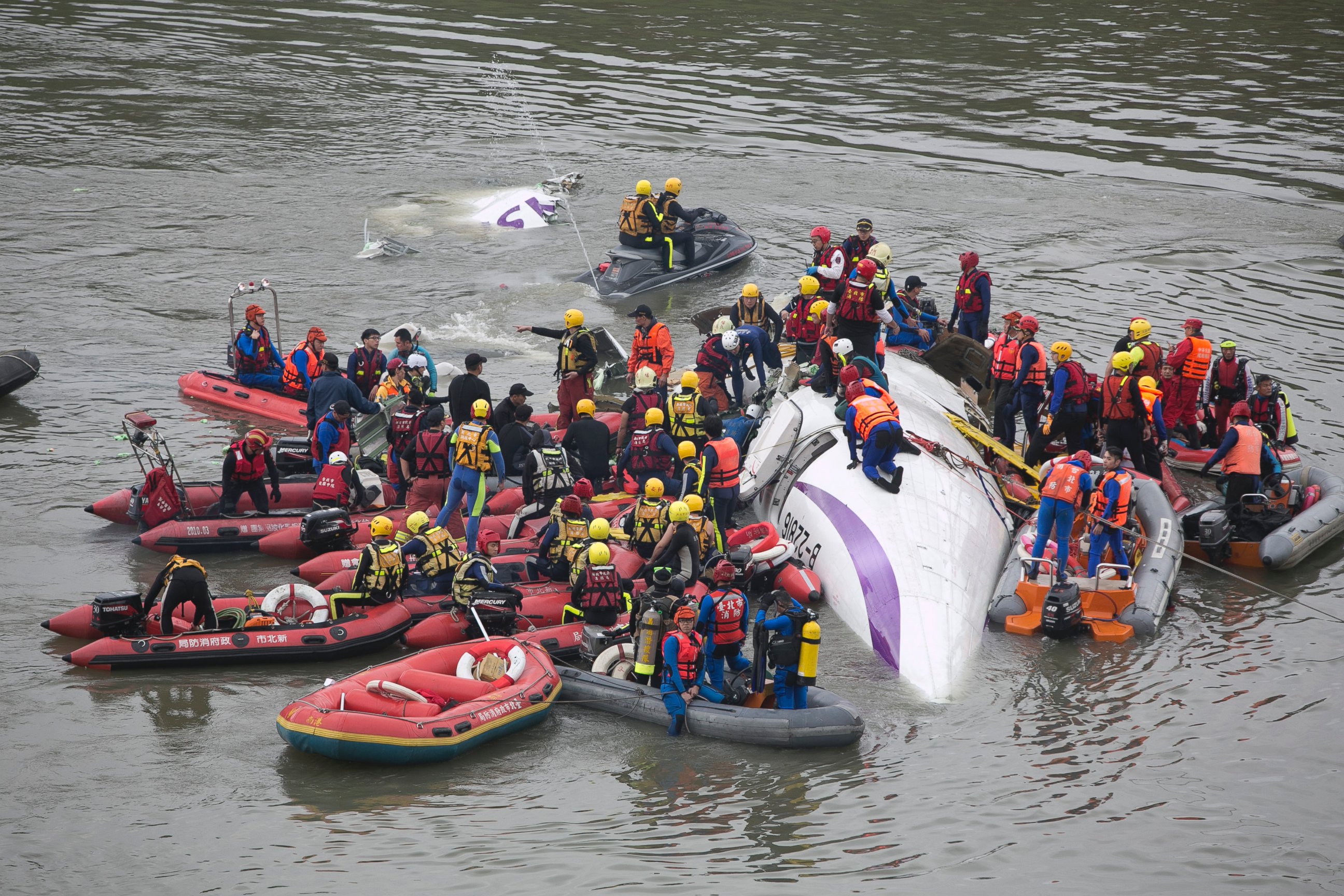Taiwan Plane Crash: What We Can Learn About the TransAsia Airways Crash
It offers investigators clues as to what was happening in the final moments.
— -- The unbelievable dashcam footage of a plane careening into a river in Taipei, Taiwan, has revealed some major clues about what happened in the moments before the fatal crash.
"It was just pretty clear what happened. It's a classic stall -- a loss of lift," said ABC News aviation and military consultant Steve Ganyard.
The pilot reportedly called in a mayday, saying that one of the engines had failed. Ganyard said that the footage appears to at least partly support that claim.
"A lot of times when you're flying on one engine and you get too slow and it stalls," he said. "It will tend to fall out on one side or the other."
In the case of the TransAsia Airways flight, "it was the left wing that fell first," Ganyard said.
While the visible tilt makes it clear that one side had more power than the other, Ganyard said that the failure of one engine does not necessarily explain why the plane went on to crash.
"None of this really makes sense just yet because an airplane with two engines should fly perfectly well with just one," he said.

Pilots like those in the cockpit on this flight should have been able to handle such a malfunction, especially since these pilots had logged a "good" number of hours in the cockpit, according to Ganyard.
"It does take some piloting skill and good training to fly around with one engine but we didn't see any other contributing factors," Ganyard said.
The flight route and the location of the crash does clearly show the pilots were aware of problems and actively tried to stay near the water to help with a possible landing.
Though the footage of the plane's wing clipping the freeway is dramatic, that damage is nothing compared to the potential disaster that could have happened if the plane had hit a nearby building instead.

Ganyard pointed out that in the final moments before the crash, the nose of the plane is kept pointed up to avoid what appears to be an apartment building, and by clipping a wing on the bridge, that lessened some of the impact on the water when it did crash.
While at least 31 fatalities have been confirmed at this point, those final moves by the pilot likely helped save lives, Ganyard said. He said he was surprised by how relatively unscathed the survivors were as they were rescued from the site.
"The fact that people were able to climb out is really surprising," he said. "You didn't see anybody bloodied. You just saw people standing there."


